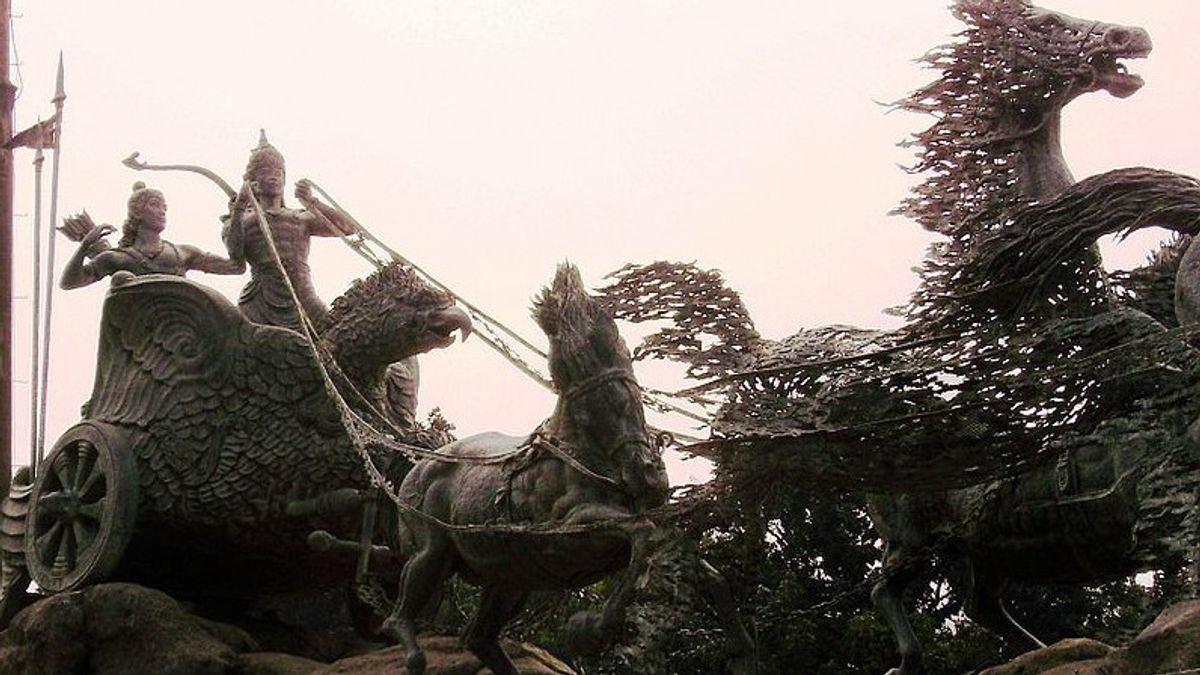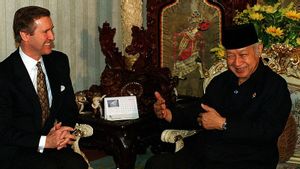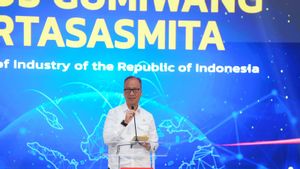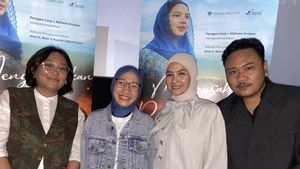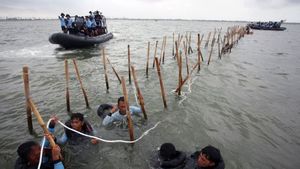JAKARTA - Soekarno and Suharto are different individuals. The political direction of the two is the opposite. So is the style of leadership. However, they both have a side in common. Both are equally literate in the arts. Both Soekarno and Suharto understood very well that art works could be a medium for burning people's spirits. Soekarno built the Hero Statue. Meanwhile Suharto did not want to lose. He built the statue of Arjuna Wijaya. The statue was famous and eternally known as the Horse Statue.
No one doubts Bung Karno's artistic blood. his love of art is endlessly expressed on various occasions. He likes to call himself a very loving person. He loves his country, its people, women, and most of all art.
The love for art is the greatest. Even more so than self-love. It is the domination of the artist's blood that makes him always challenged to reveal the implied meaning of every work of art in the world.
Soekarno also showed a love for art when he became the First President of the Republic of Indonesia. Jakarta is like a canvas for him. He freely described Jakarta as he wished. Jakarta as a beacon of the nation's struggle, he said. This means that Jakarta is considered the main face of Indonesia.
The city is the backdrop for many important events – from the national uprising to the proclamation of independence. For him, the most reasonable way to legitimize the greatness of Jakarta is to present a variety of high-value works of art in every corner of Jakarta. And Soekarno became the architect.
“People say that the President of the Republic of Indonesia has too much of an artist's blood. However, I am grateful to the Creator, because I was born with refined feelings and artistic blood. Otherwise, how can I become the Great Leader of the Revolution, as the 105 million people call me? Otherwise, how can I lead my people to reclaim their independence and rights, after three and a half centuries under Dutch colonial rule?”

“Otherwise how could I instigate a revolution in 1945 and create a unified Indonesian State, consisting of the islands of Java, Bali, Sumatra, Kalimantan, Sulawesi, the Maluku Islands and other parts of the Dutch East Indies? The rhythm of a‐revolution is breaking down and building up. Development requires the soul of an architect. And in the soul of the architect there are elements of feeling and the soul of art," said Soekarno as written by Cindy Adams in Bung Karno's book: Connecting the Tongue of the Indonesian People (1965).
In his work, Soekarno got inspiration from everywhere. Including when he made a visit to the Soviet Union in 1960. At that time, Soekarno was immediately attracted to the work of the famous sculptor of the Soviet Union, Matvey Manizer.
Without further ado, Soekarno specifically asked Adam Malik - who was then the ambassador in Moscow - to look for Manizer. Sukarno's message was clear. He left a message to Manizer to help him make a statue of the struggle for the liberation of West Irian.
The image and shape of the statue is Bung Karno's own initiative. Bung Karno had the idea at that time to make a statue of a mother who was willing and happy to release her fighters to seize West Irian. It was in the farewell scene that the mother gave a packet of rice to the young warrior who was about to leave for the battlefield. However, the whole picture was still in the form of a rough scribble.
Manizer immediately took his son, Otto, to Indonesia to realize the statue according to Bung Karno's order. Manizer then conducted research in various parts of Indonesia. After that, Manizer was attracted to West Javanese folklore about a mother who sent her child away to fight on the battlefield. Because of that, Manizer was more confident in realizing the Statue which was later remembered as the Hero Statue at the Farmer Monument.
“Manizer and Otto were inspired by folklore from West Java, namely the story of a mother who took her son to fight and gave his son rice in the form of rice. They then made a statue of a hero in the form of a Pak Tani from bronze," said Firman Lubis in the book Jakarta 1950-1970 (2018).
Suharto builds Arjuna Wijaya's "Horse" Statue
The difference in leadership style between Sukarno and Suharto is clear. The pattern of leadership between the two tends to be opposite. But on the one hand, they both love art. Suharto also cleverly wrapped every artwork that was present during the New Order era to uphold his fragrant image as a great leader.
Like Bung Karno, Suharto also used art as a medium to ignite the spirit of the Indonesian people. The presence of the statue of Arjuna Wijaya, for example. The statue of Arjuna Wijaya was originally inspired by Suharto's visit to Turkey. During his state duties, Suharto visited many places. In the middle of the trip, Suharto was attracted by the many beautiful monuments along the way.
Every monument that Suharto encountered always contained an inspiring philosophical story. Suharto also realized that there were not many similar monuments in Indonesia. He then took the initiative to make a statue containing local heroic epics. Puppet stories, for example. As a result, Suharto intended to adapt Javanese wayang epics. he conveyed his intention directly to the famous Balinese sculptor, Nyoman Nuarta.
"Pak Harto said at that time that our protocol roads did not have monuments with philosophical stories. He then asked him to find stories that contained Indonesian philosophy. Finally, we made them out of the story of the Baratayuda War," said Nyoman Nuarta as written by Kompas.com.
The story of Bharatayudha is one of the fragments in the Mahabharata. In which, Sri Krishna's dialogue led Arjuna who was hesitant to go to the battlefield. Thus, a statue was created depicting an old man riding a chariot and a young boy holding a bow and arrow. Even more interesting, the carriage was pulled by eight horses.

Suharto took the making of the statue of Arjuna Wijaya seriously. In the making alone, Suharto involved 40 artists, with Nyoman Nuarta in command. The work is carried out in Bandung, West Java. The funds spent were quite large for 1987. The usual total spent was between Rp. 290 million - Rp. 300 million.
Suharto was satisfied with the result. He himself did not want to be left behind in inaugurating the Arjuna Wijaya Statue on August 16, 1987 on Jalan MH. Thamrin, Central Jakarta. The statue is up to 23 meters long, about 5 meters high, and weighs 3,600 pounds. The presence of Arjuna Wijaya is expected by Suharto to burn the spirit of the younger generation to defend the homeland. Young and old alike must support each other. The rest, the work is proof that Suharto has high artistic blood and can be compared, even, rival Bung Karno.
“Thus, the construction of such a massive image of Suharto is not only in the social, political and economic fields, but also in the fields of art and literature. Works of art and literature must be subject to government policies. Art and literature must be media that are involved in the construction of good and positive images about the New Order government.”
“Similarly, song lyrics, advertisements, sermon materials, artistic activities and drama or ketoprak performances must present the interests of the Suharto government. All artistic and literary activities must avoid political and anti-criticism issues. This is what Ariel Heryanto calls apolitical and depolitical literature,” concluded FX Baskara Tulus Wardana in his book Uncovering the Mysteries of Suharto's Power (2007).
*Read other information about the NEW ORDER or read other interesting articles from Detha Arya Tifada.
Other MEMORIESThe English, Chinese, Japanese, Arabic, and French versions are automatically generated by the AI. So there may still be inaccuracies in translating, please always see Indonesian as our main language. (system supported by DigitalSiber.id)
